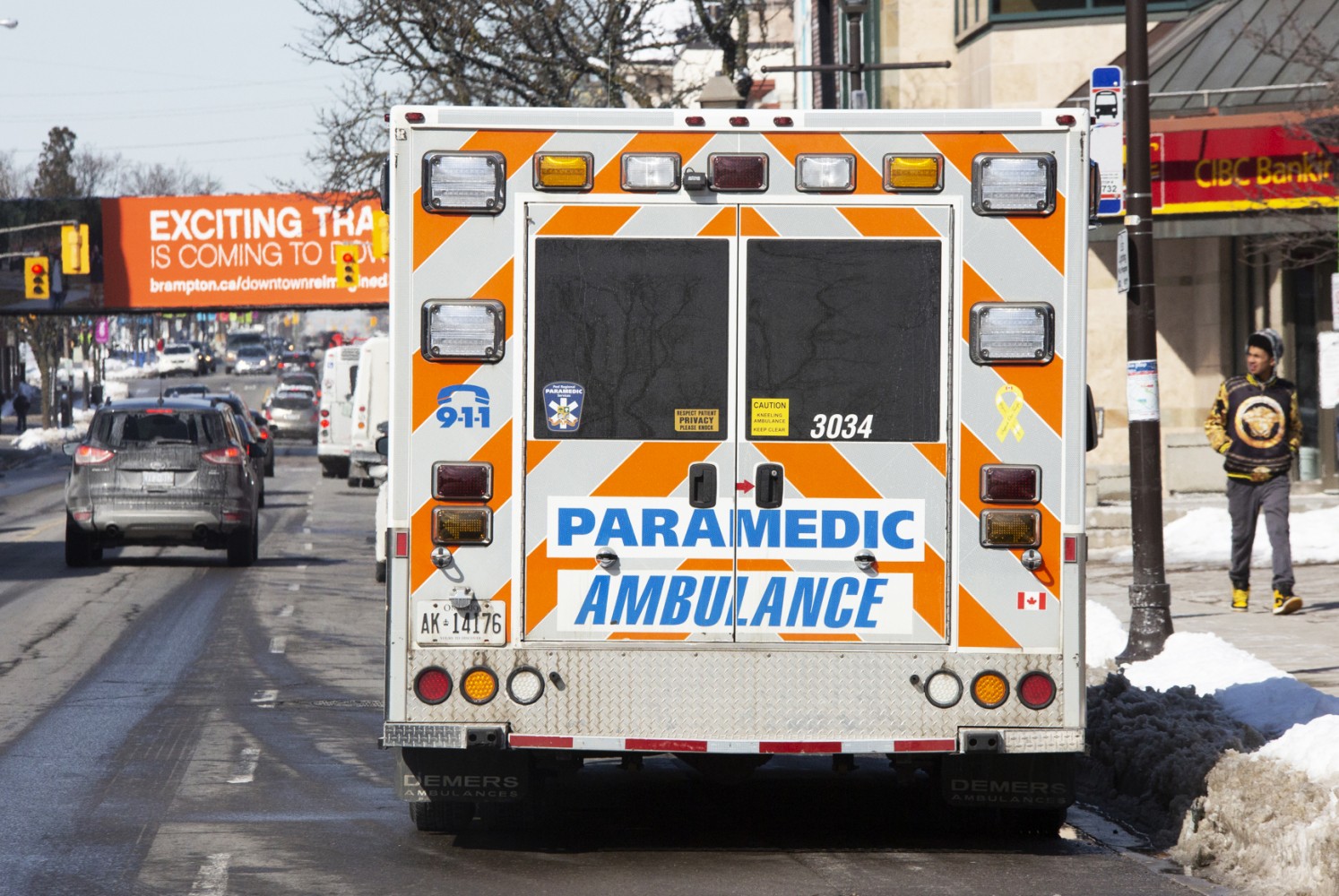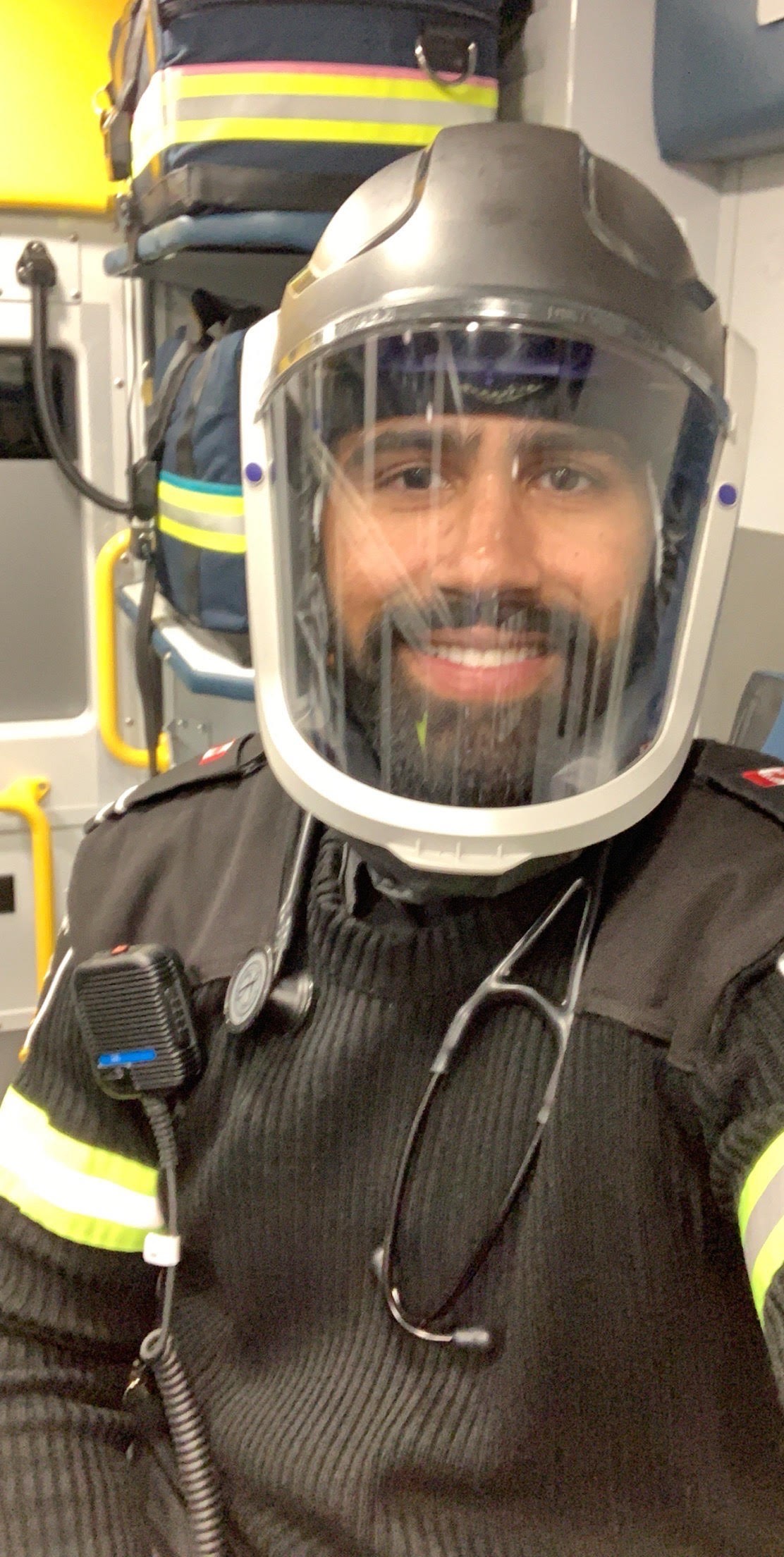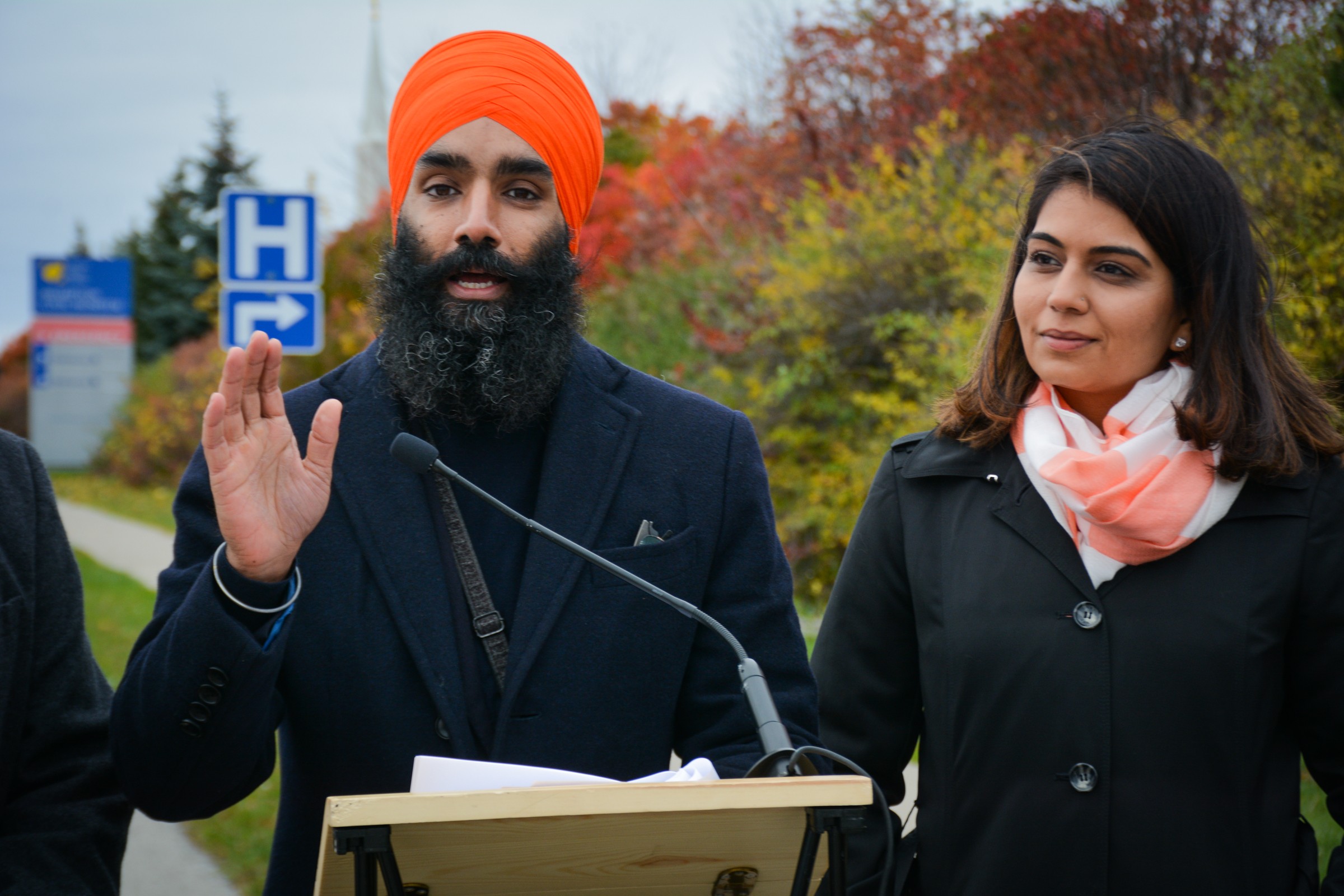
Facing scrutiny, province tables changes to safety standards to accommodate Sikh paramedics
Barely a week after the result of an arbitration involving a Sikh paramedic in Hamilton, the Ontario government has moved to amend safety standards branded “racist” by Peel’s paramedic union president. Extended media coverage and questions from NDP MPP Gurratan Singh (Brampton East) highlighted 2017 standards that barred paramedics who wished to grow a beard or facial hair from frontline duties.
The issue was raised in an arbitration case between paramedic Harkarn Sihota, who works in Hamilton and Peel, and the City of Hamilton Paramedic Service. The case highlighted how helmet standards introduced in 2017 by the Ontario Liberals effectively barred paramedics with facial hair from frontline service. One particular group this impacts is baptised Sikhs, who must maintain a kesh (unshorn hair).
“I didn’t do this for myself, I think it is important for anyone who wants to grow facial hair for religious or cultural reasons,” Sihota told The Pointer after the Ministry of Health tabled changes to the regulations. “Whether it’s Jewish or Muslim people or Orthodox Christians, I think everyone should have the right. I am fortunate to work with Peel who put health and safety at the forefront, the accomodation they provide for me makes me no less safe than a clean shaven person, to be honest it probably provides superior protection.”

Paramedic Harkarn Sihota
The problem highlighted by the arbitration relates to specific equipment standards around paramedics wearing compatible helmets and respirators. The presence of facial hair with the regulated breathing equipment causes an issue because it is unable to form a safe seal with the skin to stop contamination. Until 2017, a workaround was available through Power Air Purifying Respirators (PAPR) which operated safely with facial hair. However, the new, upgraded helmet requirements created an issue of incompatibility.
Situations where paramedics are forced to wear both a helmet and breathing equipment are extremely rare. Respirators are in place for when paramedics deal with infectious diseases or airborne threats, while helmets are generally for live scenes such as car crashes. However, while rare, these situations do happen, so paramedics must be equipped for both.
Helmet upgrades from 2017 were roundly criticized. Experts told the arbitration and The Pointer that the new requirements for helmets went beyond what was necessary for paramedics, as the standard was created for construction workers to defend against very heavy blows and high voltages.
As Peel paramedic president Dave Wakely sarcastically put it: “The idea of stopping a paramedic from working because a car full of SARS patients might crash into a high voltage transformer is absurd. Those hazards very rarely intersect.”
After media and political attention, new safety standards have been drafted to come into effect in January 2020, which will allow paramedic services to choose how to balance their responsibilities between the rights of their employees and general safety.
“The proposed changes cut some of the red tape of running a paramedic service,” Wakely explained to The Pointer. “The net result is that all services will be able to look at the hazards they face and make decisions about personal protective equipment that works for them.”
“The Ministry of Health regularly reviews and updates provincial standards such as the Provincial Equipment Standards for Ontario Ambulance Services - this includes the helmet standard,” David Jenson, a spokesperson for the Ministry of Health, told The Pointer. “The proposed removal of the safety helmet requirements from the Equipment Standards allows paramedic services to provide their employees with the most suitable type of safety helmet to meet the needs of the individual employee as per the requirements outlined in the OHSA and its regulations,” he added.
In essence, the standards which mandated paramedic services to adopt helmets that would not work with PAPR technology have been relaxed, giving services the power to offer accommodations.
“It’s great for me, it’s something I’ve been going through in Hamilton for two years now, I’m glad that in January it will all be over and done with,” Sihota said. “I owe them [the unions] a lot. The union in Peel and the union in Hamilton did a great job at getting the story into the media… I think Peel is at the forefront of this whole accommodation thing, it’s one of the services where they’re looking to move ahead rather than backwards. I wasn’t the first person in the service to be accommodated with this request, I certainly won’t be the last, I find it so eye-opening that one service can make the accommodation so rapidly and others [Hamilton] can make their members go through hell.”

MPP for Brampton East Gurratan Singh
Despite the 2017 standard changes, the Peel paramedic service stood firm. Instead of upgrading its helmets, the paramedics kept the older helmets to accommodate the service’s 22 Sikh workers, including Sihota. Wakely told The Pointer he was pleased with how the paramedic service had acted and that they were on the “right side of history.”
“Chief [Peter] Dundas made the right choice even in the face of competing demands,” he said.
Though the union doubtless played a key role in gaining traction for the story, Sihota was keen to put his thanks to MPP Singh on the record as well. “If I ever see him I’m going to thank him personally myself. To do something like that is truly amazing, he didn’t have to,” he said. “I owe him a lot, he brought it up in question period and from there, with the help of the union, we got the ball rolling... It means a lot when you get someone from a political position to help your cause.”
Email: [email protected]
Twitter: @isaaccallan
Tel: 647-561-4879
Submit a correction about this story


